The purpose of this blog
My website says I’ve been a photographer since I was seven years old. Well, here you go! A Polaroid of my mom with me and one of my cameras. I think I got my first camera aroun
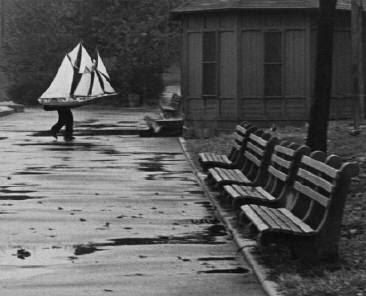
Kertész’s photography at first glance is understated, sometimes playful, sometimes ordinary, but upon further inspection, it is as if it breathes a new life into the viewer. The things we take for granted and his sort of one-on-one viewing of life brings us into a different perspective. We see the things Kertész saw as if with new eyes and I don’t mean the obvious — of course, a photographer can bring a new look to the familiar or convert the jaded and sway the popular opinion — but this is about shedding every preconception and seeing the imagery as if you stripped everything away to its bare essence. It is so cleansing that we abandon the known to celebrate the apparent simplicity as a brand new interpretation. It may seem elementary on the surface, but it is layered so that the longer you look at one of his photographs, the more it reveals, the more unnerving that we didn’t stop to, say, “smell the coffee”. His work forces us to stop and inhale deeply.
Even his distorted images, long before the advent of Photoshop, don’t feel “altered” per se. There is a sort of innocent confidence about them in the sense that they feel experimental yet deliberate and as if he worked only with the visuals — the composition and the shape and form, not the technique.
It was in 1912 that Kertész began his long, illustrious and prolific career. He was born in Budapest in 1894 and in 1925, he moved to Paris where he remained until the threat of World War II prompted him to move with his wife to New York in 1936. He was still shooting in the 1980s when he then created a series using a Polaroid SX-70. He was clearly one to evolve and continue and persevere. His conviction was especially apparent in the fact that even when slighted — even when others were credited for his work or when he was omitted from important exhibits, he did not let this deter him.
The term Kertészian was coined to describe his language which was essentially a combination of Hungarian, French, and English — likewise, it has been observed that Kertész had three distinct periods, the Hungarian Period, the French Period, the American Period.
Kertész did something that ironically is not always done — he shot photography so honestly that you tend to think that he created the art itself. That is what I mean by “pure”.
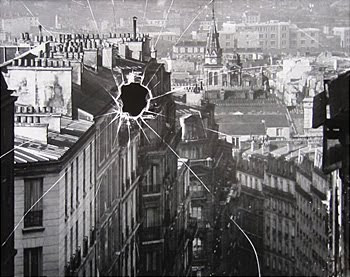

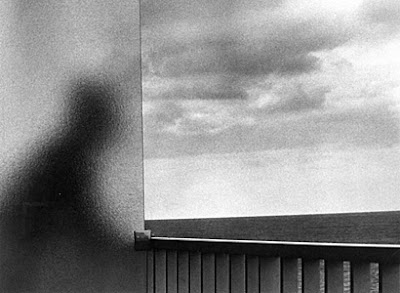
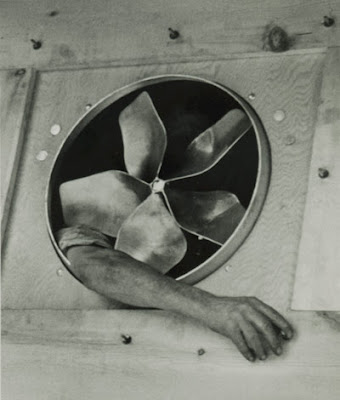
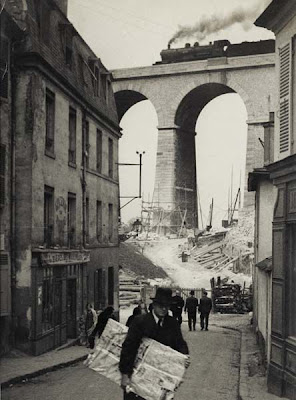
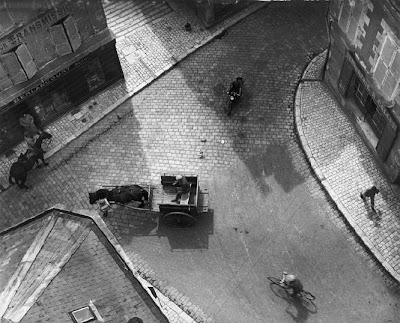



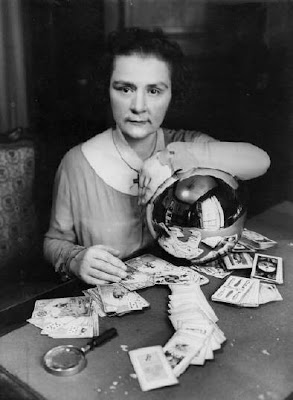
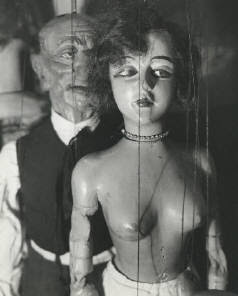
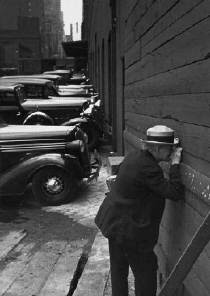
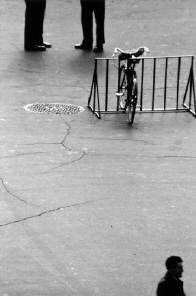


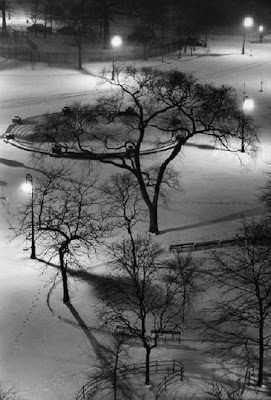
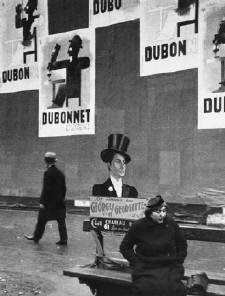
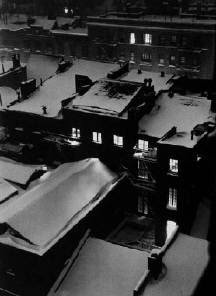


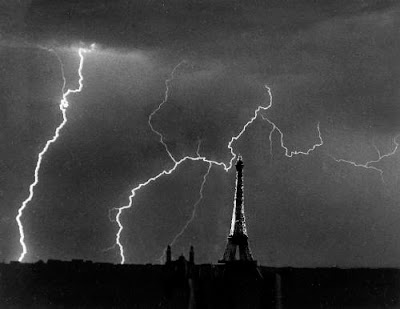

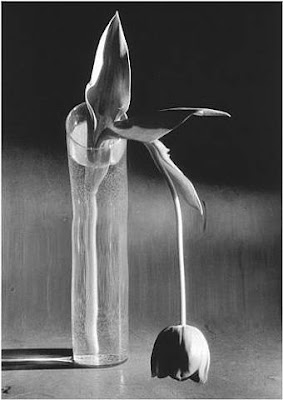
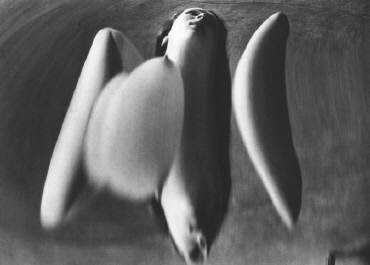
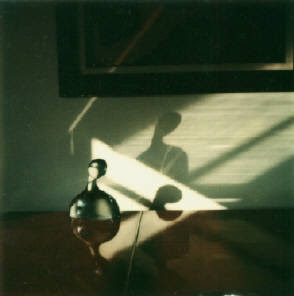
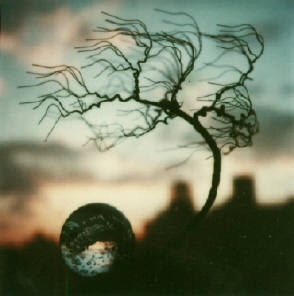
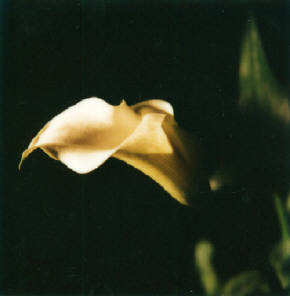
My website says I’ve been a photographer since I was seven years old. Well, here you go! A Polaroid of my mom with me and one of my cameras. I think I got my first camera aroun
Here is one of my favorite compilations: photographs with dogs as part of the subject. I somehow lost all the photo credits and will over time get to adding them for each shot.
I look at this photograph and have to ask myself, why? Why do I find that a random group of passersby with dull, lifeless expressions in a rather ordinary, mundane environment, a s
“Smokin’ Hot Photography” can be interpreted in a few ways, from literally incorporating elements of smoke and fire to creating visually captivating and passionate im
Around this time in October of 2009, Irving Penn passed away at the age of 92. Here is a compilation of images featuring masks … something apropos of October and its bearing of
Cameras that don’t operate might seem like mere objects, but they can hold significant value in artistic and conceptual photography. see more posts Blog Marc Riboud Disclaimer:
As I put together this collection of images, I am reminded of how small we are in this world. As I look at Salgado’s work and each time I go back to it, everything around me, t
see more posts Blog The purpose of this blog My website says I’ve been a photographer since I was seven years old. Well, here you go! A Polaroid of my mom with me and one of my c
Kodak Instamatic 104 with Flash Cube see more posts Blog Marc Riboud Disclaimer: This post does not do Marc Riboud justice! There is the Pentagon March shot of 1967 (seen at the
see more posts Blog Philip-Lorca diCorcia I look at this photograph and have to ask myself, why? Why do I find that a random group of passersby with dull, lifeless expressions in a
Behind every great beauty photographer, is a great hair & make-up stylist. When I first saw this promo piece for Sabrina Rinaldi, I just knew I had to contact her. It is an
What I should have done was to put these photographs in chronological order, for then we would see the development of Cecil Beaton‘s work. But, I didn’t do that. I have allowed
I am reminded how much laundry is piling up at home. If only it could be so glamorous. Our Latest Blogs 14 Jun Blog usamasaeed219 Tami Bone Read More 14 Jun Blog usamasaeed219 Stev
Last year, Taschen released a book of Helmut Newton Polaroids. As did many photographers, Newton used Polaroids to test a shot before shooting actual film. His widow, photographer
Mert Alas and Marcus Piggot imagery is a full on vision. Their work is not just confined to what goes on behind the camera or with their impeccable lighting — they are equally
Nick Knight even makes a cup of coffee look sensual and fashionable. The steam is akin to the haute couture dresses in motion, or the bountiful roses that he photographs routinel
Here is the CNN story (by way of photographs and captions) on the recent death of Remi Ochlik who was killed while covering the Syrian conflict in Homs. Click here: Remi Ochlik Cli
Here is an interesting illusion as created by increasing and decreasing contrast. “The Illusion of Sex” (2009 Richard Russell for Best Illusion of the Year Contest; 3rd Place)
Someone near and dear to me has a birthday this month. Two of his passions are sailing and photography, so I figured this post featuring a daguerreotype case with embossed sailboat
I’m not sure if this is a matter of the “decisive moment” or more a matter of scrambling to get a shot and actually getting it! Here is the caption Daniel Dolpire provided to
2012 World Press Photo of the Year was won by Samuel Aranda for his photograph of a woman hugging a wounded relative inside a mosque turned hospital in Yemen. Aranda was shooting f
My son sent me a link to Pavel Kosenko’s blog which showcases 4 x 5 Kodachrome photographs from World War II. I am posting some of the images by Alfred T. Palmer, several of whic
There are two articles worth reading on this copyright case: DPreview.com’s, “Similar, but not copied, image found to breach copyright” and the one written (with loads of typ
Robert Frank gave us, “The Americans”, a book that was originally issued over 50 years ago. I thought this photograph from the book would be a fitting image for today. (Her
I came upon a BBC site for which photographer, Timothy Allen, kept a blog as he shadowed BBC film crews shooting the BBC series entitled, Human Planet. Rather than post so many wor
Kazakh woman in traditional wedding dress I was looking up something on Kazakhstan and came across these beautiful photographs. The photographs were taken between 1911 and 1914, an
With the recent release of “The Lost Photographs of Captain Scott” (Robert Falcon Scott’s Lost Photographs — click here to see the New York Times articles and slideshow), I
This post is not intended to celebrate the paparazzi subculture, but instead to pose the question: if they were relegated to a time and a place, along with some constraints and a s
It is only days away before party goers descend upon Times Square to bring in the New Year. Here is a photograph of Times Square minus the New Year’s Eve crowd, shot by Inge Mora
David LaChapelle is known for his bold and provocative style in photography, often challenging conventional norms and perceptions through his art. Click here: David LaChapelle Se
While this is not related to photography, it is related to art and the subject of copyright. To familiarize yourself with Jeff Koons and his iconic balloon dog, here is an intere
he Christmas season is a time filled with joy, warmth, and celebration. As a photographer, it’s a wonderful opportunity to capture the essence of the holidays through your le
Shane Bauer and Josh Fattal were detained in Iran since July 31, 2009, when news reports say they accidentally crossed an unmarked border during a hiking trip in the mountains of I
Veterans Day is a time to honor and express gratitude to the brave men and women who have served in the armed forces. As a photographer, Photograph by Philip Jones Griffiths Photog
I’m posting this just because to look at a Henri Cartier-Bresson image, is to feel good … Our Latest Blogs 14 Jun Blog usamasaeed219 Veterans Day. THANK YOU to all Veterans pas
Sometimes, if an image is successful, it needs no words, but also, no analytics or criticism. For the REALLY successful image, it compels us to ask questions and stays with us long
Update: 8/7/2013 Judge Dismisses Privacy Lawsuit Arne Svenson’s series entitled, The Neighbors is creating new controversy. Click on the link above to get the story and see the w
The two photographs above, Subway Sleepers and Wall Street Subway, remind me of the way that Jacques Lartigue saw the world. (See my post on Lartigue.) It is from a similar perspec
These are not selfies! They are self-portraits, with the exception that some are just photographs of photographers with cameras – or wait, actually some are just photographs of p
It has been said that versatility is not always such a great thing in that it implies, “jack of all trades; master of none”. The contradiction to that statement is nowhere more
I realize I am LONG overdue in posting! I also realize that I have not done (so far as I can tell) a post on David Doubilet’s work which is more than a shame; it is a disgrace. I
I have always said that Lartigue’s work was that as seen through a child’s eyes and indeed that is what much of it was. He was born into a wealthy family in France and he photo
I just read of the remarkable discovery of a new species of monkey and it prompted me to think of Jill Greenberg’s series on monkey portraits. Here is the CNN article on the new
Photograph of a painting of a camera by, miniaturist: Lorraine Loots I prefer this site above (versus her own homepage) since it showcases in high-quality some of my favorite indiv
I have many heroes in the world of photography. But, once you see Javier Arcenillas‘s work, you would have to place him near the top of the list if not at the very top. With each
The coveted Pirelli calendar has it’s match! Well, almost. I know that is hard to believe, but for every Yin there is a yang. But, first …….. For those unfamiliar with the Pi
I have posted on Nick Brandt‘s work before, but it would never be enough for me. This time I am posting with particular emphasis on the story of the beautiful and awe-inspiring M
I have two German Shepherd dogs (one a purebred and one a mix) and I delight in understanding their make-up. There is a reason they are the most popular breed used in police and mi
It has been a long while since I posted … and this gave me reason to get back to it. With Joan Rivers just having passed away, I am very, very sad – she was a genius, maverick,
Andres de Dienes, while best known for his glamour portraits of Hollywood legends and in particular, his photographs of Marilyn Monroe, is even better considered for his overall di
For this post, I decided to pair the subjects of cameras and Brigitte Bardot – a love I have for both! If you can identify a camera where one is not identified (or if you think o
I have to admit, I didn’t know of Graciela Iturbide‘s work until I did a Google search for iguanas. I”m not trying to be cute — that is exactly how I came upon her work. Le
I guess my subsequent post led me to this one. I am going to have to look this up but I could swear this was something we learned in our large format camera studio class. It was wh
The concept of “Hamburger, Hamburger” invites us to delve into the playful and creative side of culinary art and photography. Photo credits: David LaChapelle, Philip-Lo
Richard Avedon (1959) I had posted this photograph (above) previously and explained that this was a matter of Genius x 2. Two of my favorite artists — Richard Avedon, the photogr
This could go on forever … I didn’t include vintage photographs, at least not Victorian ones or the ones with no photo credits … and I didn’t include vintage pin-up either
“If it is to be utterly honest and direct, it should be related to the pulse of the times – the pulse of today.” –Berenice Abbott Two photographers, different eras, same su
Kertész’s photography at first glance is understated, sometimes playful, sometimes ordinary, but upon further inspection, it is as if it breathes a new life into the viewer. The
Did Helmut Newton do it first? (See my posts on Helmut Newton by clicking on his name in the left column of this page or type his name into the search box. Additionally, I recommen
Here is an editorial about the controversy re: Jill Greenberg’s series, “End Times”, 2006 that still is talked about long after its creation. It pains me to even have to post
Thank you @RubenBensimon for the info: This shot was taken of Robert Plant holding a Nikon F with Photomic FTN finder, during the Led Zeppelin Tour of Japan in September, 1971.
It is with the deepest sadness that I write this post. This post is not about photography, although I am attaching some photographs. Today, 16 December 2014, Pakistani Taliban mili
Today I looked at the work of André Kertész. Today I also am working on a submission for my stock agency. Today I’m in technical hell while reminded of the genius of the master
These words capture the essence of what many seek to express and experience on Valentine’s Day. They evoke a range of emotions and qualities that can shape the day’s ce
Tonight is a night I look forward to and I’m not sure if it’s for the red carpet or the actual awards. In honor of film, here are some images by Annie Leibovitz: Our Latest Blo
A Life Magazine photographer from 1965-1972, Lennart Nilsson was recognized for his microscopic photography of the human body and in particular, the development from embryo to fetu
Objectification as a revealing of the soul. Fashion imagery is less about portraying a person and more about mood and eliciting a response. We use a model as a mere prop or catapul
“The Stranger in the Glass Box” is a series of photographs that Quentin Shih created for Christian Dior. Our Latest Blogs 12 Jun Blog usamasaeed219 Quentin Shih Read More 12 Ju
Photo credits: Ellen von Unwerth Steven Meisel see more posts Blog Marc Riboud Disclaimer: This post does not do Marc Riboud justice! There is the Pentagon March shot of 1967 (se
A Daguerreotype of Abraham Lincoln in 1846, as photographed by Nicholas H. Shepherd, a law student who worked in Lincoln’s office from 1845 to 1847.There are no photographs of Ge
The heart-shaped reef near the archipelago of Whitsunday Island which falls within the Great Barrier Reef off the coast of Australia, as photographed by Holger Leue. see more posts
That’s right! Valentine’s Day is just around the corner. It’s a wonderful time to celebrate love and appreciation for those special people in our lives. I will ha
“Homage to Love” evokes a powerful sentiment that can be beautifully expressed through various artistic mediums, including photography. This is a series of iconic photo
In the news today, a record art sale by Sotheby’s: Alberto Giacometti’s L’Homme Qui Marche I, a bronze sculpture from the 1960s, sold for £65,001,250 ($104,327,006). Portrai
Film actor and model, Kellan Lutz is slated to be the next Calvin Klein men’s underwear model, following in the footsteps of other notables, Mark Wahlberg and Djimon Hounsou. The
“Genius” was the word that came to mind when looking through Jill Freedman‘s series entitled, “Jill’s Dogs”. I will include many of those photographs in an upcoming pos
What I like about this shot by Clark Little, a photographer who gained notoriety for his images of the Hawaiian surf, is that it does what Georgia O’Keefe did for skulls and flow
I’m told this is what is left of the Wolf Moon. I think this is night 3. I wish I had the patience to photograph this properly — the way Ansel Adams would have photographed it.
Film actor and model, Kellan Lutz is slated to be the next Calvin Klein men’s underwear model, following in the footsteps of other notables, Mark Wahlberg and Djimon Hounsou. Our
The Lovers, a painting of 1928 by René Magritte inspired this post as you can see from the featured image. This was an incredibly fun post to work on. I am sorry all the artis
You see? Not all museums are boring. see more posts Blog Marc Riboud Disclaimer: This post does not do Marc Riboud justice! There is the Pentagon March shot of 1967 (seen at the en
My first introduction to Guy Bourdin and probably a notable reference for many photographers is that of his Charles Jourdan shoe campaign of the 1970s. Bourdin’s fashion photogra
When I was in art school attempting fashion photography (since I was convinced I would be a fashion photographer, so much for convictions), I was told repeatedly, “but, you have
And so goes the age old misconception that great imagery is based solely on the type of camera you have, when, in fact, a camera is just a tool that the photographer uses to captur
Heidi Montag says she underwent a startling ten plastic surgery procedures. “For the past three years, I’ve thought about what to have done,” the reality star tells People ma
I’ve been of the mind to say that technique is not art. We create art by means of employing technique, but the minute the final work becomes about technique, it ceases to be art.
Frank Hurley was the photographer who documented Ernest Shackleton’s Imperial Trans-Antarctic Expedition that set out in 1914. To say I admire his work is an understatement. Othe
Salt of the Earth Trailer : I finally got to see the documentary film chronicling Sebastião Salgado’s work and his life. Some photographs were not familiar to me, but also illum
Painting by Gerhard Richter, 1966 Digital Photograph by Michael Somoroff, 2004 I don’t know; what do you think? It might be flattery but it might also be thievery. Our Latest Blo
Photograph of General Dwight D. Eisenhower speaking to paratroopers before they are to be dropped behind enemy lines at Normandy for the D-Day invasion. Many of them did not surviv
“I hope to stay unemployed as a war photographer ’til the end of my life.” —Robert Capa see more posts Blog Marc Riboud Disclaimer: This post does not do Marc Riboud justic
You’ve seen one photograph of a lion, and well, you’ve probably seen it a million times — it is pretty tough to not get the same kind of shot if you’re lucky enough to go o
Bunny Yeager was a renowned photographer known for her work in pin-up photography, particularly in the mid-20th century. Her photography often celebrated the beauty and allure of w
This is one of my hand-colored photographs which started as a black & white shot (and the intention of hand applying oils after toning). It takes time to hand color and it is
Photographs representing the theme of multiples… Photo credits (in alphabetical order by first name–apologies for that as I previously specified which shot was which ph
These baby bats were rescued by the Australian Bat Clinic after a violent storm threw hundreds of them to the ground. ~~~ + ~~~Photo: Newspix/Rex USA I’m posting a photograph of
Immediately after Meghan McCain (daughter of Presidential hopeful, John McCain) posted a self portrait on Twitter, the nation went abuzz and a brouhaha ensued. I have to admit, the
Our Latest Blogs 11 Jun Blog usamasaeed219 depth & dimension Read More 11 Jun Blog usamasaeed219 Homage to Nurses Being as it is National Nurses Week – beginning on 6 May and
Being as it is National Nurses Week – beginning on 6 May and ending on 12 May, the birthday of Florence Nightingale, here is a photograph that also applies to #TBT: Our Latest Bl
For fall enthusiasts and Ansel Adams aficionados, you can pick this up at Christie’s auction house for somewhere between $9,000 and $12,000. A steal compared to the $1,609,000 fo
These are but three of the masters. Helmut Newton (with Alice Springs, his wife, to the right), Irving Penn, and Richard Avedon (with Sophia Loren). Since I am a fiend for self por
I’m big on omens and since the Yankees just made it into the World Series, what better time to go live?! (www.kritinaknief.com) Here is a poignant and beautiful photograph of Bab
Classic Hollywood! (Photographers unknown) see more posts Blog Marc Riboud Disclaimer: This post does not do Marc Riboud justice! There is the Pentagon March shot of 1967 (seen at
Our Latest Blogs 11 Jun Blog usamasaeed219 classic and classy Read More 11 Jun Blog usamasaeed219 Irving Penn passed away today at age 92. : ( Our Latest Blogs 11 Jun Blog usamasae
Our Latest Blogs 11 Jun Blog usamasaeed219 Irving Penn passed away today at age 92. : ( Read More 11 Jun Blog usamasaeed219 MAGNUM LANDSCAPE This is one of the most beautiful books
This is one of the most beautiful books you will ever see. I’m using the Amazon link because it shows images of the front cover, the back cover and there is an illustration that
Our Latest Blogs 11 Jun Blog usamasaeed219 © Irving Penn Read More 11 Jun Blog usamasaeed219 too close to it Part of me wanted to include this shot on my current website but then
Part of me wanted to include this shot on my current website but then the other part of me said: –-You’re only as good as your most current work. –Maybe it’s dated. –The
I can just sit and stare at his work for long periods of time and feel gratification. I never tire of contemplating it. I cannot articulate what he does adequately, so here is
Starting with art and then setting out to document it would seem like an advantage of sorts, even cheating, but then again, if you do the art justice, THAT takes talent, finesse an
Full-frame versus cropping — to be or not to be. To “be” is to shoot full-frame. “Not to be” would suggest that if you didn’t frame your shot just right when shooting,
Photographer unknown see more posts Blog Marc Riboud Disclaimer: This post does not do Marc Riboud justice! There is the Pentagon March shot of 1967 (seen at the end of this post),
Our Latest Blogs 11 Jun Blog usamasaeed219 Good Humor Read More 11 Jun Blog usamasaeed219 Lothar Osterburg & his photogravures Read More 11 Jun Blog usamasaeed219 go for the OU
That phrase has stuck with me ever since a seminar professor explained that it was the thing to do. You should always strive for the OUTRAGEOUS when shooting. Sure, one could argue
Just as genes are not jeans, so too was Claude Lévi-Strauss of no relation to Levi Strauss. The Associated Press just reported that Claude Lévi-Strauss died at age 100. Age 100 s
The Amaryllis my aunt gave me is now onto its second gigantic bloom. You basically cannot get a bad shot. I liked the idea of seeing all the different shots I got as if on a co
Art is everywhere, except it has to pass through a creative mind.” This quote beautifully captures the essence of creativity and the transformative power of artistic vision.
Whitney Houston, one of the greatest voices of all time, left an indelible mark on the music industry and the hearts of millions. As a photographer, capturing her legacy can be a p
This post does not do Marc Riboud justice! There is the Pentagon March shot of 1967 (seen at the end of this post), along with additional iconic images that are instantly recogniza
This is one of my photographs which I’m posting today because the Bleeding Hearts in my garden are magnificent, prolific, and currently in full bloom! see more posts Blog Marc Ri
Probably one of Imogen Cunningham‘s most renowned photographs is that of the Magnolia Blossom, shot in 1925. Magnolias, along with Cherry Blossoms and Dogwoods are some of the fi
The manipulation of images began long before the advent of Photoshop and digital imaging. One of my favorite photographers,Jan Saudek, inspired me to try sepia toning, try hand-col
It was Nancy Davidson’s inflatable sculptures that first caught my eye. I instantly became an admirer, what with her ability to combine eroticism, whimsy, playfulness, and fine a
I am thrilled to say that in exactly one month, I will be seeing the Alvin Ailey American Dance Theater perform. Since it is currently on my mind, I am sharing some photographs
Valentine’s Day is a celebration of love, and what better way to express that than through fashion? Photo credits (in no particular order): Deborah Turbeville, Ellen von Unwerth,